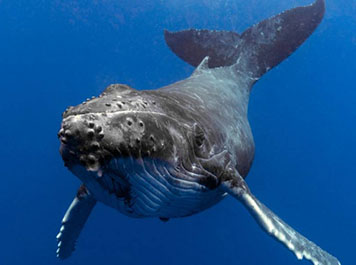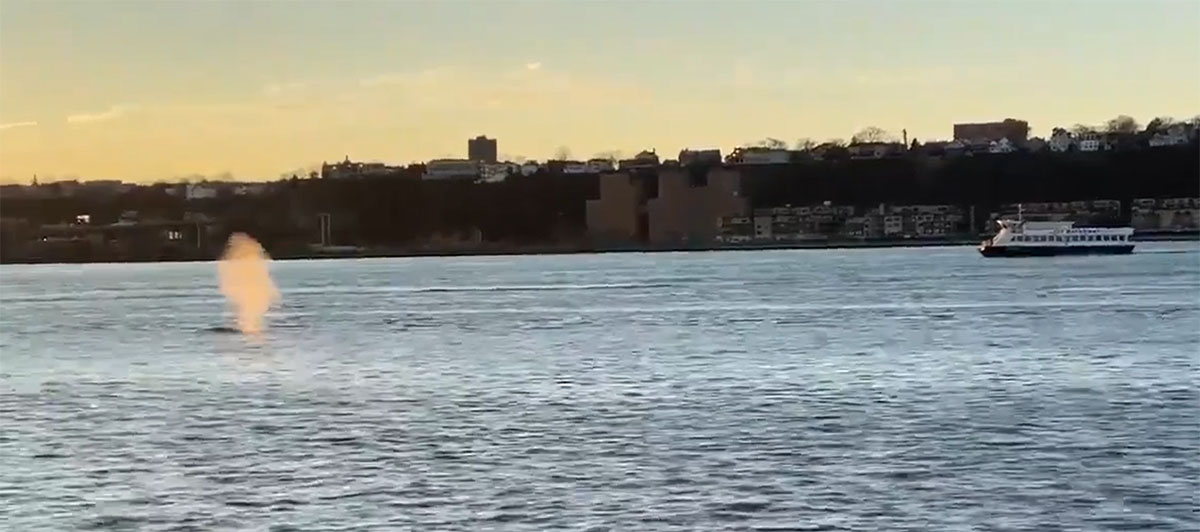Last week, a humpback whale was sighted breaching as it cruised up the Hudson River near Weehawken, New Jersey. For a number of years, these creatures have ventured into parts of the New York Harbor, often feeding on schools of Atlantic menhaden. In 2016, a whale swam up the Hudson River past the George Washington Bridge. In 2010, the conservation group Gotham Whale counted five whales in the Harbor area. Last year, the group catalogued 272 sightings, nearly all humpbacks.
The increased whale sightings are a sign of how much the water quality of the Hudson River estuary has improved, attracting marine mammals and the prey they feed upon. The humpback sighted last week may also have found the Hudson more hospitable due to the decreased boat traffic during the pandemic.
For nearly two centuries, the whaling industry hunted humpbacks and other large whales, decimating their populations nearly to the point of extinction. In 1966, a moratorium on whaling was put into place, and their numbers have begun to recover.
Our fascination with whales is understandable. The adult humpback whale is immense, ranging in length from 39 to 52 feet and weighing as much as 30 tons. The males produce complex songs that last up to 20 minutes and are repeated hours at a time. Although the song changes each season, all the male whales in a group will produce the same song. Humpback whales typically migrate 16,000 miles annually.
We humans think that culture is something unique to our species. But ecologist and author Carl Safina in his recent book, Becoming Wild: How Animal Cultures Raise Families, Create Beauty and Achieve Peace, demonstrates that certain animals have cultures that are unique to their communities. He focuses on three species — sperm whales, scarlet macaws and chimpanzees — to prove his point. Sperm whales live in clans where individuals can stay together for decades. Safina explains that much of their behavior is learned and their habits can vary from one clan to another.
Urbanization has caused biodiversity to decline and has divorced us from nature. We are fortunate to live near the Hudson River, where there are frequent reminders that wildlife can survive despite the rapid and dense development of our urban environment.
Biologist and Hoboken resident Noelle Thurlow has identified a long list of shorebirds, fish, crabs and other wildlife at the Weehawken and Hoboken Coves. She has also sighted humpback whales in the Hudson and notes that they are protected under the Endangered Species Act and the Marine Mammal Protection Act. Thurlow recommends targeting the Weehawken and Hoboken Coves for ecosystem restoration to further promote biodiversity. (See link to article below.)
Perhaps the return of the humpbacks to the Hudson is a sign that the time is ripe for such a project.
Related Documents
Comprehensive Restoration Plan – Exec. Summary
Restoring the Ecosystem of the Hoboken Cove
Biodiversity of Hoboken Waterfront
Related Links
Weehawken and Hoboken Coves provide opportunities for ecosystem restoration
The life and potential death of the Hoboken Cove
The Billion Oyster Project harnesses the oyster’s unique ability to restore
3,000-year old outrigger canoe tradition lives on at the Hoboken Cove
City to make offer to buy Union Dry Dock
FBW appeals approvals for high-rise development at Weehawken Cove
Final legal dispute over Monarch Towers reaches the NJ Supreme Court


